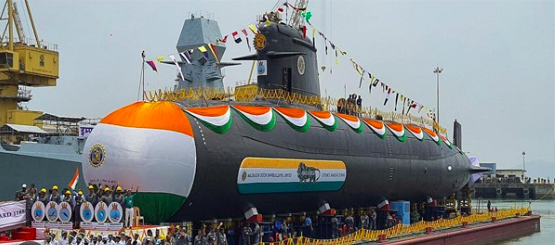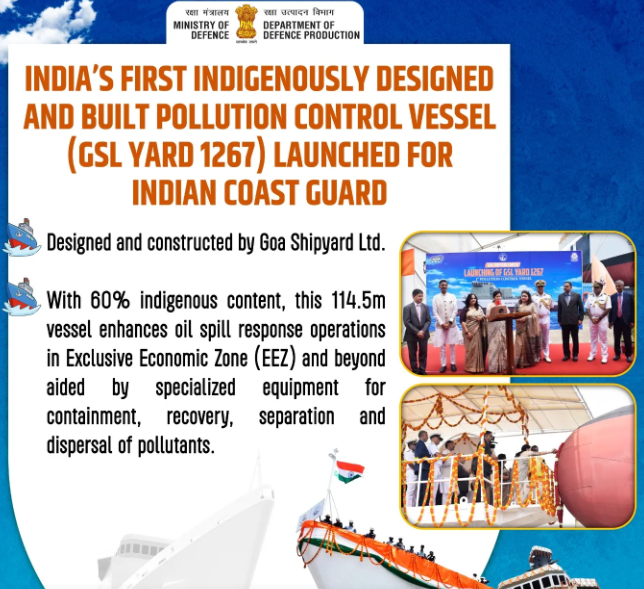30 August 2024 : PIB Summary For UPSC
1. Second Arihant-Class submarine ‘INS Arighaat’ commissioned into Indian Navy
(Source – https://pib.gov.in/PressReleseDetail.aspx?PRID=2049870 )
| Topic: GS3 – Science and Technology |
| Context |
|
INS Arighaat:
- INS Arighaat is the second Arihant-class submarine commissioned into the Indian Navy on August 29, 2024.
- It is more advanced than its predecessor, INS Arihant, incorporating specialised materials and complex engineering.

- The submarine is part of India’s strategic nuclear deterrent and contributes to the country’s “nuclear triad.”
- INS Arighaat is part of India’s long-term plan to develop both nuclear-powered and conventional submarines.
- The Indian Navy aims to commission five Arihant-class submarines and six nuclear attack submarines over time.
| Arihant-Class Submarines |
|
- The Arihant class is named after a Sanskrit word meaning “Destroyer of the Enemy,” reflecting its strategic purpose.
- The project also boosted the country’s industrial sector, especially MSMEs, and generated employment opportunities.
- The commissioning aligns with India’s defense modernization and self-reliance goals under the ‘Aatmanirbhar Bharat’ initiative.
2. First indigenously developed Pollution Control Vessel of ICG, ‘Samudra Pratap’ Launched
| Topic: GS3 – Science and Technology |
(Source – https://pib.gov.in/PressReleseDetail.aspx?PRID=2049860 )
| Context |
|

Analysis of the news:
- The Pollution Control Vessel (PCV) Samudra Pratap was indigenously built by Goa Shipyard Limited (GSL) for the Indian Coast Guard (ICG).
- The ship was designed and constructed in-house by Goa Shipyard Limited (GSL), marking a significant step in India’s self-reliance in shipbuilding.
- Samudra Pratap is part of a Rs 583 crore contract for two Pollution Control Vessels, the first of their kind to be indigenously built.
- The vessel is 114.5 metres long, 16.5 metres wide, and displaces 4170 tons.
- It is equipped to combat oil spills and pollution along India’s coastline.
- The launch highlights India’s growing capabilities in producing advanced maritime vessels aimed at protecting marine ecosystems.
3. Decoding magnetic field-ionosphere relation in Mars can help future space missions
(Source – https://pib.gov.in/PressReleseDetail.aspx?PRID=2049766 )
| Topic: GS3 – Science and Technology |
| Context |
| Researchers at the Indian Institute of Geomagnetism analyzed Mars’ crustal magnetic field and its effects on the ionosphere using MAVEN data, revealing strong daytime control and implications for future space missions. |
How Decoding magnetic field-ionosphere relation in Mars can help future space missions?
- Understanding the crustal magnetic field’s effect on Mars’ ionosphere is crucial for future space missions due to its implications on radiation shielding and spacecraft protection.
- Mars lacks a global magnetic field, so the localised crustal fields play a significant role in shielding the ionosphere from solar wind and cosmic radiation.
- Daytime crustal magnetic fields, which are stronger and more influential on the ionosphere, could impact spacecraft electronics and crew safety.
- Knowledge of these effects can guide mission planning and spacecraft design.
- Insights into the variability of crustal magnetic fields with the Sun-Mars distance help in anticipating seasonal and spatial changes in ionospheric conditions, crucial for mission timing and navigation.
- Understanding these interactions aids in developing better models for atmospheric behaviour, essential for predicting and mitigating risks during robotic and human exploration of Mars.
| PYQ: India has achieved remarkable successes in unmanned space missions including the Chandrayaan and Mars Orbiter Mission, but has not ventured into manned space missions, both in terms of technology and logistics? Explain critically. (150 words/10m) (UPSC CSE (M) GS-3 2017) |
| Practice Question: Discuss the significance of understanding Mars’ crustal magnetic fields and how can this knowledge influence mission planning and spacecraft design? (150 Words /10 marks) |
4. Rare electron localization phenomena demonstrated, can expand scope of semiconductors
| Topic: GS3 – Science and Technology |
(Source – https://pib.gov.in/PressReleseDetail.aspx?PRID=2049764 )
| Context |
|
Discovery Information:
- Researchers at JNCASR have found a new way to change how electrons behave in semiconductors by adding random impurities like oxygen and magnesium.
- This causes a big shift from metal to insulator in the material.
- It shows how electrons can get stuck in one place, which was previously hard to prove.
Potential Applications:
- Lasers: Improved materials could lead to more efficient and powerful lasers.
- Optical Modulators: Enhanced control over light in communication systems.
- Photoconductors: Better materials for devices that convert light into electrical signals.
- Spintronic Devices: Advances in technology that use electron spin for data storage.
- Holography: New materials could improve dynamic holographic displays.
- Sensors: More sensitive and accurate sensors for various applications.
| Practice Question: Discuss the implications of the recent discovery of the quasiclassical Anderson transition in semiconductors. How might this finding affect future technologies? (150 Words /10 marks) |





